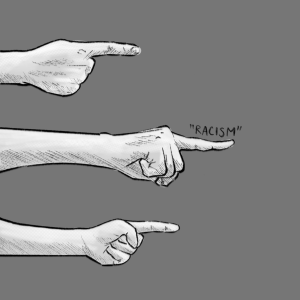How Remote Work Might Revitalize the Arts
February 26, 2021
The pandemic has caused worldwide grief and economic fallout—nearly 550,000 people have died from it in the US, and the unemployment rate is the worst since the Great Recession. But the pandemic won’t have exclusively negative effects. For one thing, many families report having grown closer during the pandemic. But another positive consequence is less anticipated: an increasingly remote workforce has begun to leave big coastal cities such as Boston, New York, and San Francisco. The result is that they may soon become more affordable, and with that, welcome young, creative artists like those who originally made those cities desirable, but were pushed out.
When COVID-19 first hit, many big companies faced the challenge of trying to figure out how they would shift their operations out of central offices and into their employees’ living rooms. But it turns out it was mostly the small companies that took the fall. Big companies like Facebook realized that employees could be just as effective at home and the company could be just as profitable with a home-based workforce. In a livestream to his employees, Facebook CEO Mark Zuckerberg announced that he would allow his 48,000 employees to request to work online permanently. He predicts that they “could get to about half of the company working remotely permanently.”
Facebook, like many other tech companies, is headquartered in the San Francisco Bay Area. San Francisco is one of the most expensive cities to live in America, mostly due to tech companies that increase demand for real estate. But since the pandemic, San Francisco has seen one of the largest rent declines, with residential rents dropping nearly 27 percent according to a 2020 National Rent Report from Apartment List. New York City, Boston, and Washington DC have seen similar decreases. But, where are these employees moving? Judging by the real estate market, Middle America. Rent in places like Idaho and Ohio have been steadily increasing over the pandemic. Although much of this change is due to layoffs and evictions, and will likely balance out more after the coronavirus vaccine becomes completely widespread, the lowering of demand for tech real estate will most likely be permanent.
So much of the 20th century culture originated from movements that were the result of low rent
Why is this a good thing? Well, the neighborhoods in these cities have come under some of the most intense residential pressure in their history. As rents and property values skyrocketed and tech companies and other big businesses moved in, low income people were forced out. These people were part of families who had lived there for generations, and young creative people that were the lifeblood for the cities that they couldn’t afford anymore.
So much of the 20th century culture originated from movements that were the result of low rent. In the 1970s and 1980s, New York City was in a downturn and even went bankrupt in 1977. Downtown New York was incredibly affordable and although crime rates were very high, artists could do what they wanted without concern for expenses. This helped give rise to the downtown scene, full of visual artists like Jean Michel Basquiat and Keith Haring, and musicians such as Grandmaster Flash and the Ramones, who pioneered hip hop, and punk, respectively. These artists were also inspired by the political climate. And we already can see around us now the art that has come as a reaction to police brutality and an oppressive political administration. If rent continues to go down, up and coming artists may soon be able to afford to live in these cities that artists before them made great.










